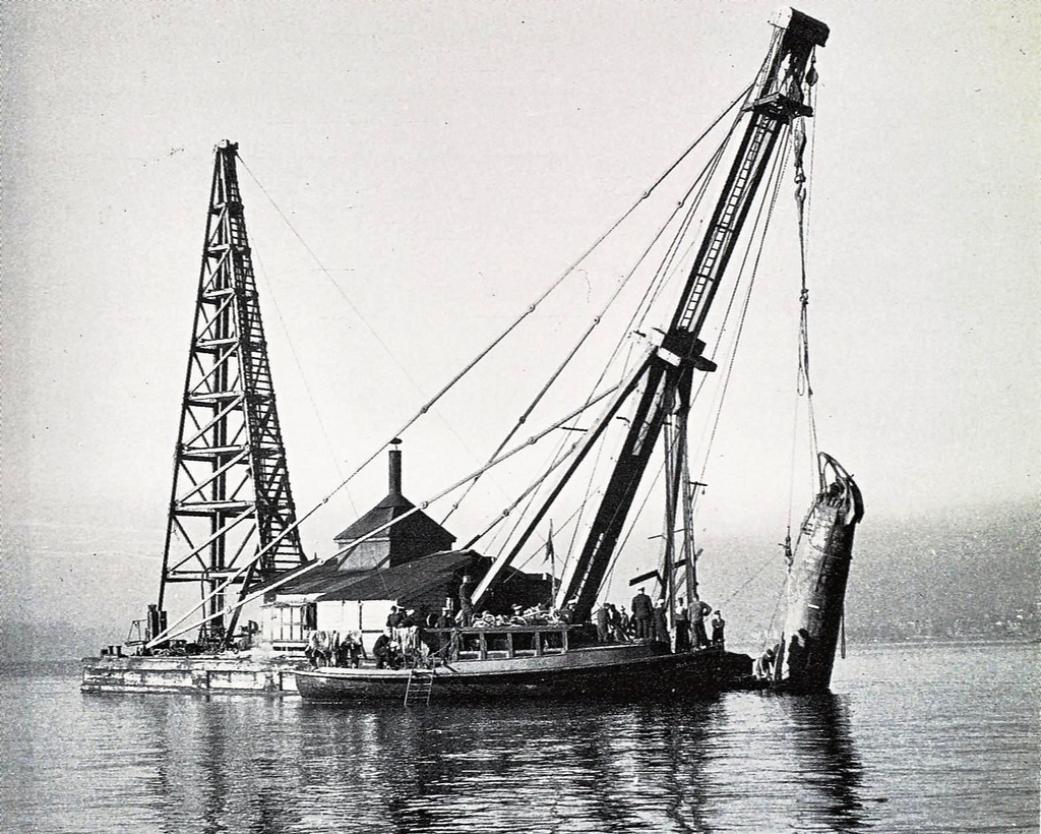Pittwater's Midget Submarine M24 War Grave Renews Memories Of 75 Years Ago
On Sunday 12th of November 2006 at about 9am, seven scuba divers met at Long Reef Beach north of Sydney for another fun day of scuba diving. They decided to head for a spot they had marked four months earlier. Their fish finder had noted something interesting on the sea floor. The seas had been too rough that time to investigate, so they had decided to leave it to a calmer day.
The divers were able to peer into a window on the conning tower and saw that the inside was full of sand and mud.
The seven recreational scuba divers were:-
Alan Simon, 59 yrs, retired Company Director
Paul Baggott, 33 yrs, builder
Phillip Hendrie, 65 yrs, retired printer
Anthony Hay, 49 yrs, bus driver
David Muir, 35 yrs, electrician
David Arnold, 44 yrs, plumber and gas fitter
Greg Kearns, 32 yrs, mortgage broker
They all took "sickies" the next day and did another dive on the midget submarine, just to make sure it was not all a dream and it was still there!!
The divers met with the Director of the Naval Heritage Collection, Commander Shane Moore who confirmed that they had indeed located the missing M-24 Japanese Midget Submarine. Commander Moore also told them Japanese tourists have often arrived at Garden Island to lay a wreath at the Conning Tower memorial.
The divers all shared a concern for the ongoing conservation of the wreck of the submarine. They, like all of us, are keeping the exact location a secret to avoid scavengers desecrating this war grave. It is likely that this is the final resting place of the two Japanese sailors:-
Lieutenant Katsuhisa Ban
Ensign Mamoru Ashibe
Kazutomo Ban, the 74 year old brother of Lieutenant Katsuhisa Ban, had always wanted to know where his brother lost his life. He remembers the day he went to the train station with his mother to say goodbye to his brother who was on his way to fight in the coming war. Retired doctor Kazutomo Ban lives in Hekinan about 40 kms from Nagoya.
In 2012 the group that found M-24 was among those attending a Commemoration here in Pittwater to honour all those who had served, focused on the 70th anniversary of the World War II Japanese submarine attack on Sydney Harbour.
On 31 May 1942, 21 sailors were killed aboard the navy depot ship HMAS Kuttabul along with six Japanese submariners aboard three midget submarines.
There have been years of detailed archaeological surveys and conservation works to stabilise the site, and extensive consultation has been undertaken with the Commonwealth and Japanese governments, the Royal Australian Navy and the NSW Water Police. The M24 submarine site is at a depth of 54 metres and is a registered war grave - a sacred place - for which there are big penalties for interfering with or disturbing this site.
When the Japanese attacked Sydney Harbour. The trees weren’t as tall as they are now at Turramurra then, they were more sparse, and there wasn’t as much traffic noise as you have in Sydney now, so we could hear all the shipping on the harbour and the guns on that particular night. At anytime we could always hear the shipping tooting and carrying on but on that particular night it was action packed.
A bloke flew over Sydney in his aeroplane and we had a searchlight battery just opposite where we lived down in Holmes street, there were three searchlights there, they were manned by the Women’s Army who we knew through spending all our time over there; so their lights were up and all over the sky, and other lights were up too, from the Bondi area and from Parramatta too somewhere, they were up everywhere. It was a very busy night. We could hear the ships moving, we could hear the guns going. To me it was exciting because I was so young but not so to all the adults, they seemed to have a grip on how serious it was.
Oh yes. That was just about when my birthday was, the 27th of May and I think they came in a few nights later. On the night of my birthday, my girlfriend and I, she was one of my bridesmaids later, we went on a ferry to Manly. They later shelled Bondi from the ocean; some poor people copped it along the beach front. We were in Fletcher street, which is up on the heights looking down on Tamarama beach, and between Bronte and Bondi beaches. We weren’t affected; it was the ones down low on the beach that got hit.
Bert King OAM: In the early days of the war they were sure we were going to be invaded; there was barbed wire all along the beaches, trenches everywhere, and because we were at Scouts we were pulled in, the big lumps of fellows like me, into what we called the NES, the National Emergency Services. I got a yellow armband, a tin hat, had to have a pushbike with a light on it, and a First Aid Kit, and you had to provide your own. They made us go and do the St John’s Ambulance course; I got my first certificate when I was 12. We used to go on patrols.
When the submarines attacked Sydney we were on standby. I remember sitting in the corner of Atkin’s Store on the corner of Loftus and Lagoon Street and Ted Atkins was the leader of the push, and there was Charlie Kerwin, Mick Marlin, and Lenny Marsden’s father, four men and me. We were put on standby and we could hear all the noise going on in Sydney, could see all the searchlights going and all this sort of thing, and we were stood down about 2 o’clock in the morning or somewhere near then, and I always though what a motley looking bunch of heroes we were. I pushed on with the scouting, I stayed in that until I was quite senior.
Gwenyth Sneesby: I joined the Navy in 1942, 9th of December. I was stationed at HMS Penguin which was at Balmoral. We did our Basic Training there, which was more or less marching around the oval and teaching us discipline. At the end of six weeks there were ten girls whose names were called out, and I was one of them, and they said, well you’re going to go to HMS Kuttabul, which isn’t in Garden Island as everybody thought. Garden Island was where the Kuttabl was moored and there was Garden Island, Pott’s Point. Garden Island was being connected to the land at this stage, in those days. They were making a road, called the ‘Burma Road’. Until then it was definitely an island.
Why did they carry on HMS Kuttabl even though she had been sunk? It was a tribute I suppose, to all those sailors who were lost during that time. The Kuttabl was a training ship and all those boys lost were young trainees, some still teenagers. HMS Kubttabl was what was on our hats. It’s still the Kuttabl today. I was home here at Mona Vale the night that occurred.
What was your role during this conflict?
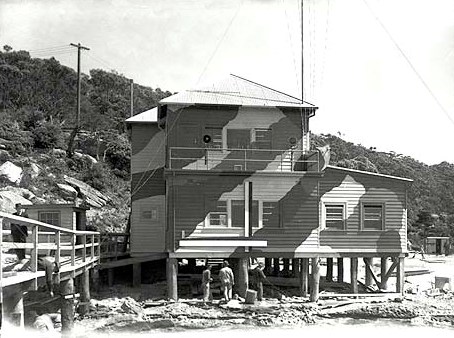 We were told we were to go to Bradley’s Head. We didn’t know what Bradley’s Head was and we were quite worried because we didn’t know of anything being there. An establishment had been built there by the American Navy, a camouflaged two storey building and it was called the Degaussing Range. I think because of my ticket writing training they decided I could do this work and we worked on charts there.
We were told we were to go to Bradley’s Head. We didn’t know what Bradley’s Head was and we were quite worried because we didn’t know of anything being there. An establishment had been built there by the American Navy, a camouflaged two storey building and it was called the Degaussing Range. I think because of my ticket writing training they decided I could do this work and we worked on charts there.
Degaussing is the process of decreasing or eliminating a remnant magnetic field. Degaussing was originally applied to reduce ships' magnetic signatures during WWII. It was the testing base really for degaussing; which is a bit of a complicated situation; but we used to operate ten instruments and from that the Electrical Officers who were with us would calculate the amount of electrical current that had to be passed around the hull of a ship to repel the magnetism of the mines, to make them safer in waters where there were these magnetic mines. It was quite a technical job.
We didn’t do the calculations. We operated the machines. It was similar to those heart monitors that have the lines going up and down and the ten gauges, we had to operate those while the ship was going across the harbour and their magnetism was being recorded on these machines.
We would then take off the tape off these twelve machines and put them together and we would trace over those and give them to the Officers and they would calculate the necessary adjustments that needed to be made to the electrical current. They were the clever ones. It was very interesting. The Navy, the American Navy, stayed there for a couple of weeks to teach us girls how to operate the machines. There were ten of us who worked there, and four Naval Officers. There was a lot of camaraderie between us girls.
To get to Bradley’s Head from Mona Vale we had to go to The Spit on the bus then a tram which finished at the Zoo (Taronga). Then we had to walk through Ashton Park to get to Bradley’s Head. It was quite a walk. When we wanted to go home we often use to catch a lift from various boats from one of the ships that were anchored in the harbour. If they were going ashore they’d come past and see if we wanted a lift. We had a jetty out to the end of the degaussing establishment and we used to get a ride from any boat going past that was going to Man O’ War steps at Garden Island. The girls would signal to them.
How many ships were in the Harbour? Lots of them, lots of Merchant ships. They used to moor at Chowder Bay, which was just around the corner, and would have to pass us. They were bringing goods and supplies to Australia. When I think about it nowadays and all the dangerous things that happen to ladies, we were just so innocent, not thinking anybody would harm us, getting on boats with strangers, people from other countries, just to get a lift. You wouldn’t go on your own of course, there would be two or three of you. There were real gentlemen and real ladies then.
A week later, on the 8th of June 1942, just after midnight again, a Japanese submarine I-24 travelled at periscope depth about 9 miles south west of the Macquarie light near Sydney. The I-24 surfaced and pointed its deck gun towards Sydney. Commander Hanabusa gave target instructions to gunnery officer Yusaburo Morita to aim directly at the Sydney Harbour Bridge. As they travelled in a north west direction towards the coast, Morita fired his deck gun across the bow of I-24. He fired 10 shells within 4 minutes. The shells came down in the eastern suburbs of Rose Bay, Woollahra and Bellevue Hill. No 1 Simpson Street Bondi was also hit. Fortunately only one gentleman was injured in fracturing a foot as a result of this attack.
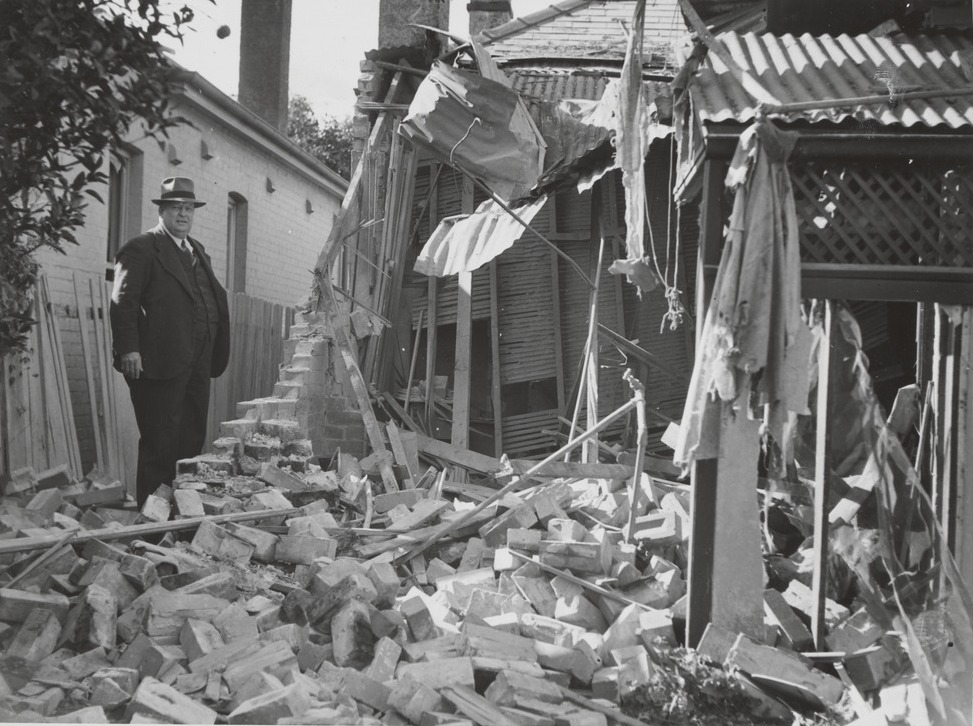
Japanese shelling of Bondi, courtesy State Library of Victoria. Image No 0- 2355037
SYDNEY, Mon: The old Hawkesbury River bridge, over which all men and materials going north from here had to cross, was one of the targets of the Japanese midget submarines which entered Sydney Harbour. This was stated by Mr. McKell, Premier, when he opened the new Hawkesbury Bridge today.
The new bridge was begun in 1939, and replaces the old one, which was completed in 1889 to become the last all-rail link between South Australia, Victoria, New South Wales, and Queensland.
Diagrams found among the Japanese submarines' papers showed points to be attacked, and had a red dot on the Hawkesbury Bridge, Mr McKell said.
Construction of the new bridge had continued throughout the war. All men and materials were Australian. Mr. Hartigan, Railways Commissioner, said about 3,000 trains a month crossed the Hawkesbury. HAWKESBURY BRIDGE WAS JAPANESE TARGET (1946, July 2). The Argus (Melbourne, Vic. : 1848 - 1957), p. 3. Retrieved from http://nla.gov.au/nla.news-article22319821
They were trying to stop the Japanese coming into Pittwater. There was a net across the mouth of Pittwater, which you had to go through if you wished to go out to sea. I used to go fishing a little bit then and I remember hating having to go through that net gate.
I remember my father used to go fishing at that time with some of the local people and I too would go out sometimes. I always remember the fact that you had to go through the gate to get out to sea – we didn’t do this very much as no one wanted to be out in the ocean at that time with so many Navy vessels and possible submarines and enemy ships out there.
I remember we’d fish underneath West Head and the guns would be up there and they’d point them down on us! So I knew they were there.
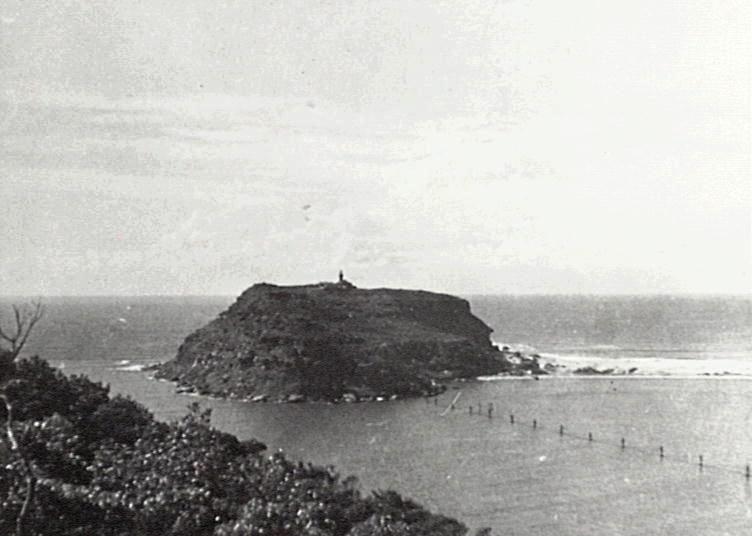
Anti-submarine net between Barrenjoey Headland and West Head. Courtesy Les Wright. Held in MonaVale Library local history unit.
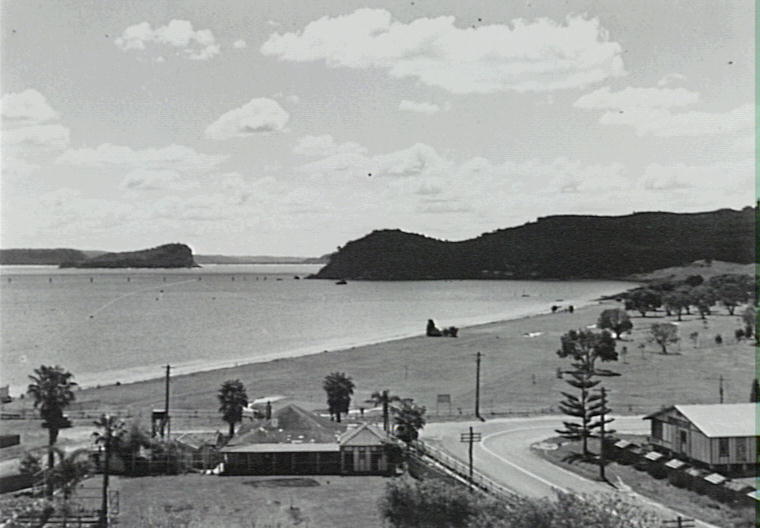
Corner of Barrenjoey Road and Beach Road Palm Beach with Mr B.L. Houghton's house on the left and the Rendezvous Tea Rooms on the right and anti submarine net in Pittwater in the background. Courtesy Jim Macken. Held in Mona Vale Library local history unit.
When we were living further towards the Mona Vale end of Bayview the Army were there. We lived in Roche Avenue – just up from where the Tennis courts are now. The Army were camped further along, where the dog park is now – there were three houses, ours included. They had their tents there, all along there, so you were conscious of the Army being about. We weren’t allowed to have much to do with them of course.
Apart from having the net and gate to stop people at the Palm Beach end they put stops around the edges of Pittwater – these concrete pyramids. They were great heavy things they dropped in so nothing could go over them. They used to go all around the foreshores. Eventually they kept sinking down into the mud of course, and there is a lot of them still under the mud even now. They had great big steel loops on them.
My father would get them and make moorings out of them – they could never move, once they were put down they were there, permanently. The only way he could do it was get two dinghies together, wait for the tide to come in to lift it, tie the pyramid concrete onto it, then cut it – a couple of times the dinghy was sinking just as much as the pyramid!
OFFICIAL ENEMY CLAIMS
NEW YORK. Saturday.— A Japanese submarine sank 65 vessels, totalling 444.000 tons, in the Pacific and Indian Oceans up to last Thursday, says the Tokyo official radio. The claim In detail was— 'Hawaiian area: 15 ships of 101.000 tons: South-west Pacific: 15 ships of 96.000 tons: Indian Ocean: 35 ships of 246.000 tons.' JAPANESE SUBMARINE (1942, May 18).Daily Advertiser (Wagga Wagga, NSW : 1911 - 1954), p. 1. Retrieved from http://nla.gov.au/nla.news-article144187537
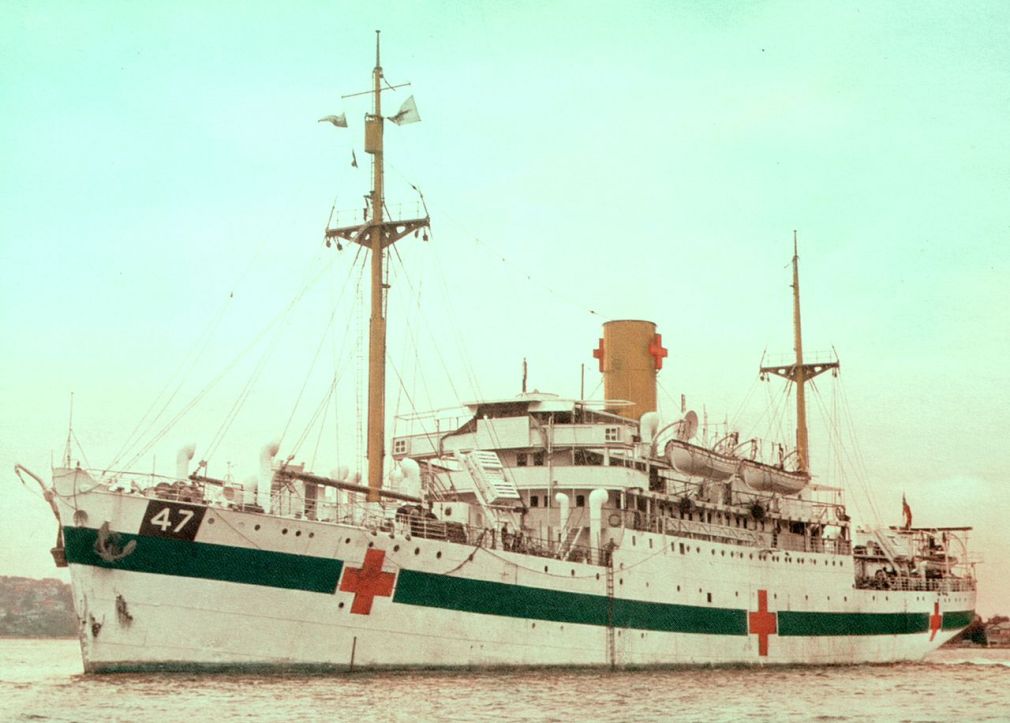
Harbour defence craft included the anti-submarine vessels HMAS Yandra and Bingera; the auxiliary minesweepers HMAS Goonambee and Samuel Benbow; pleasure launches converted to channel patrol boats (and armed with depth charges), namely HMAS Yarroma, Lolita, Steady Hour, Sea Mist, Marlean, and Toomaree; and four unarmed auxiliary patrol boats. Many of these launches had attended and participated in Pittwater Regattas prior to the war and were praised as such after hostilities as an auxiliary 'mosquito fleet', a name that had also been used to describe much earlier, from 1840, Hawkesbury and Pittwater traders.
In naval circles an organisation such as the Royal Motor Yacht Club is regarded as possible of conversion into a valuable auxiliary service in time of war, and in this connection the craft are often referred to as the "mosquito fleet." On Saturday, however, a more imposing impression was created as the ceremonial procession of visiting cruisers swept past the flagship of Branch Commodore A. D.Walker, of Broken Bay. The fleet was led by Miramar II, and advanced in line astern from a point near the entrance to the bay, creating the impression of a line of destroyers. As Miramir II. went past Lolita, the Broken Bay flagship, Commodore Stuart F. Doyle greeted Branch Commodore Walker with a salute of 11 guns, and received a similar courtesy from the after deck of Lolita. As each visiting ship passed flags were dipped in true naval style. ...MOTOR YACHT CLUB. (1933, October 9). The Sydney Morning Herald (NSW : 1842 - 1954), p. 12. Retrieved from http://nla.gov.au/nla.news-article17013956
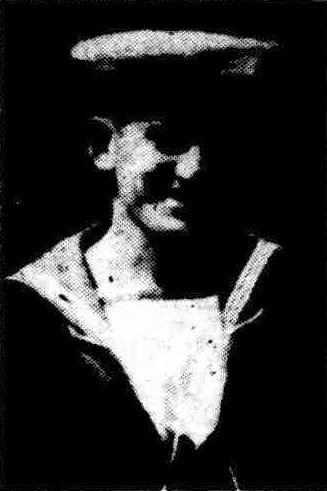
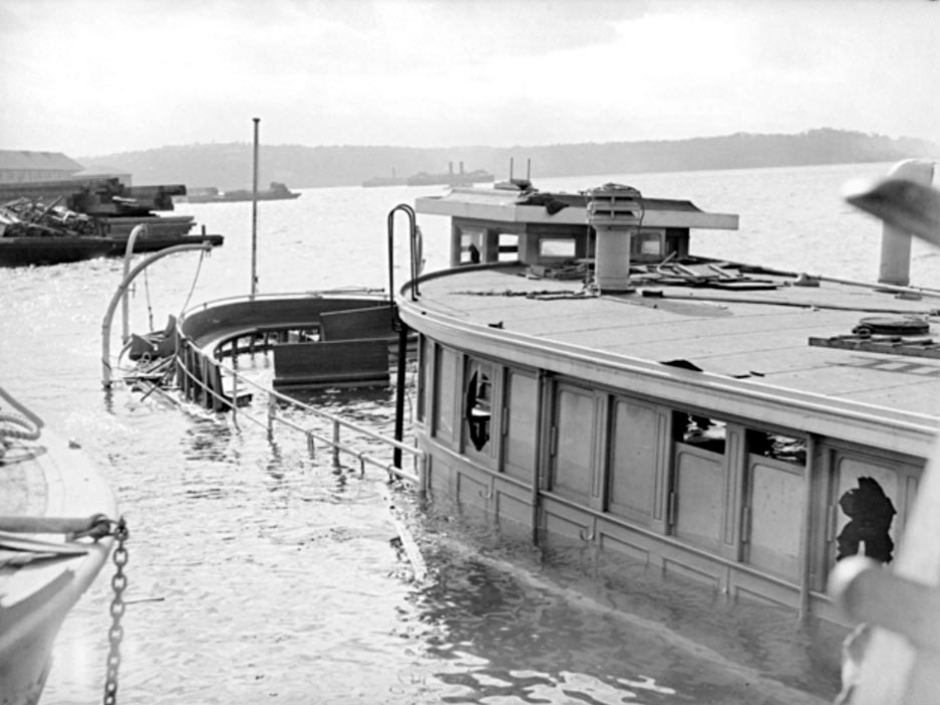
Muirhead-Gould gave the general alarm, along with orders for ships to take anti-submarine measures, at 22:27; the alarm was repeated at 22:36 with advice for ships to take precautions against attack, as an enemy submarine might be in the harbour. At the time of the first alarm, Sydney Harbour was closed to external traffic, but Muirhead-Gould ordered ferries and other internal traffic to continue, as he believed that having multiple ships travelling around at speed would help force any submarines to remain submerged.
Midget submarine M-24 was the second to enter the harbour. HMAS Falie grazed M-24's hull and reported the contact to command. The report was not followed up. M-24 crossed the indicator loop undetected at 21:48, and at approximately 22:00 followed a Manly ferry through the anti-submarine net. At 22:52, M-24 was spotted by a Chicago searchlight operator less than 500 m (1,600 ft) to the moored cruiser's starboard, and on a course roughly parallel to the ship's facing. Chicago opened fire with a 5 in (130 mm) gun and a quadruple machine gun mount, but inflicted minimal damage as the weapons could not depress far enough. Some of the 5 in (130 mm) shells skipped off the water and hit Fort Denison's Martello tower, while fragments were later found in the suburbs of Cremorne and Mosman.
The senior officer present aboard Chicago ordered the crew to begin preparing for departure, and for USS Perkins to begin an anti-submarine screening patrol around the cruiser, orders that were revoked by the sceptical Captain Howard Bode when he arrived on board at around 23:30.
HMAS Whyalla and Geelong also fired upon M-24 as it fled west toward the Sydney Harbour Bridge, before the midget was able to submerge and escape. When it returned to periscope depth, the midget found itself west of Fort Denison. It turned and sailed east for about 1 nmi (1.2 mi; 1.9 km), then took up a firing position south-west of Bradley's Head, from where its commander could see Chicago's stern silhouetted against the construction floodlights at Garden Island's new Captain Cook Graving Dock.
On 1 May 1940, Prime Minister, R.G. Menzies, told parliament : "A dry dock of a larger size than any in Australia has been an important strategic consideration since the size of capital ships has increased so greatly. I do not need to elaborate the great value to Australia of a dock capable of accommodating not only the largest warships but also merchant ships of great tonnage. The possession of such a dock would make Australia a fit base for a powerful fleet and would, in certain contingencies, enable naval operations to be conducted in Australian waters without the necessity for ships to travel 4,000 miles to Singapore for purposes of refit and repair. It is estimated that three years will be occupied in the construction of the dock."
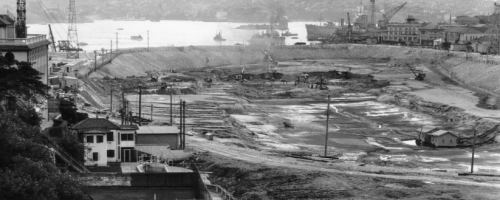
Garden Island was identified out of three options as the best and the construction of the graving dock, new workshops and modern machinery would be provided on the island, together with construction of a repair wharf with a 250-ton crane. The coffer-dam, known as the 'Burma Road', was commenced in December 1940 and completed in February 1942 this involved the reclamation of 30 acres between Potts Point and Garden Island and the construction of the graving dock approximately 1,140 feet (345 metres) long, 147 feet (45 metres) wide and 45 feet (14 metres) deep.
Midget submarine M-21—from I-22—possibly entered the harbour at the same time that USS Chicago opened fire on M-24. The unarmed auxiliary patrol boat HMAS Lauriana spotted M-21 and illuminated the submarine's conning tower, while sending an alert signal to the Port War Signal Station at South Head, and the nearby anti-submarine vessel HMAS Yandra. Yandra attempted to ram the submarine, lost contact, regained contact at 23:03, and dropped six depth charges. At the time of the attack, it was assumed that the depth charges had destroyed or disabled the midget, but M-21 survived. Historians believe that the midget took refuge on the harbour floor and waited until the Allied vessels had moved away before it resumed the attack.At 23:14, Muirhead-Gould ordered all ships to observe blackout conditions. Just after 23:30, he set off on a barge towards the boom net, to make a personal inspection.
The Admiral reached Lolita at about midnight and indicated to her crew that he did not take the reports of enemy submarines seriously, reportedly saying: "What are you all playing at, running up and down the harbour dropping depth charges and talking about enemy subs in the harbour? There's not one to be seen." The crew reiterated that a submarine had been seen, but Muirhead-Gould remained unconvinced and before he left, added sarcastically: "If you see another sub, see if the captain has a black beard. I'd like to meet him."
Despite the blackout order, the Garden Island floodlights remained on until 00:25 the next morning. About five minutes later, M-24 fired the first of its two torpedoes; it delayed firing the second torpedo for several minutes as the midget submarines would lose longitudinal stability immediately after firing a torpedo. Historians are divided as to the exact paths of the torpedoes relative to Chicago, although all agree that the US cruiser was the intended target. Both torpedoes missed Chicago. One of the torpedoes continued underneath the Dutch submarine K-IX and HMAS Kuttabul, then hit the breakwater Kuttabul was tied up against. The explosion broke Kuttabul in two and sank her, and damaged K-IX.
Steady Hour and Yarroma continued the attack, dropping seventeen depth charges on believed visual sightings and instrument contacts of the midget over the next three and a half hours.
At 04:40, HMAS Canberra recorded that the Japanese may have fired torpedoes at her. This may have been one of many false alarms throughout the night. However, M-21 had attempted to fire its two torpedoes, but failed because of damage to the bow either from HMAS Yandra's ramming or depth charges, or a possible collision with USS Chicago, making it possible that M-21 attempted to attack the cruiser. The observer aboard Canberra may have seen bubbles from the compressed air released to fire the torpedoes.
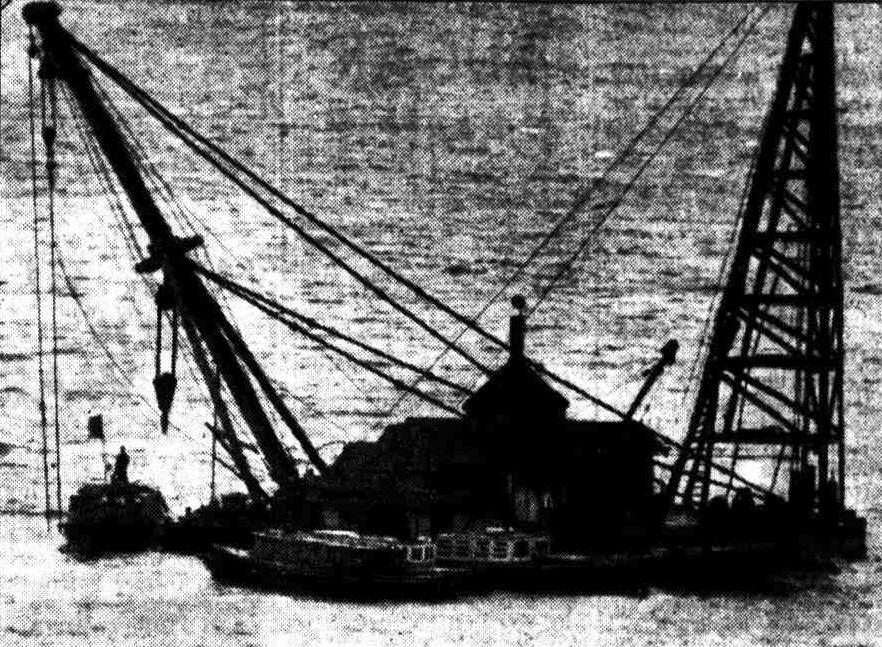
WATCHING SALVAGE OF JAP SUBMARINE
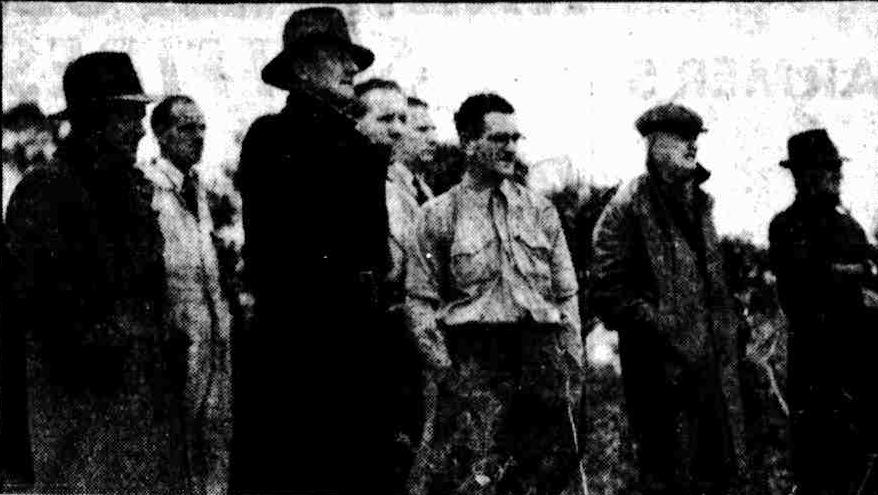
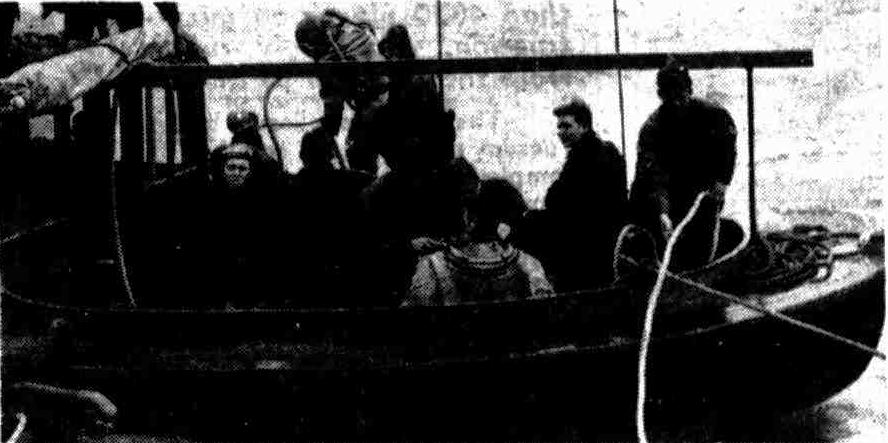
Divers at work in Sydney Harbor on the sunken Japanese submarine.
Department of Information photo. WATCHING SALVAGE OF JAP SUBMARINE (1942, June 4). The Sun (Sydney, NSW : 1910 - 1954), p. 3 (LATE FINAL EXTRA). Retrieved from http://nla.gov.au/nla.news-article231789934
Divers at Work on Submarine
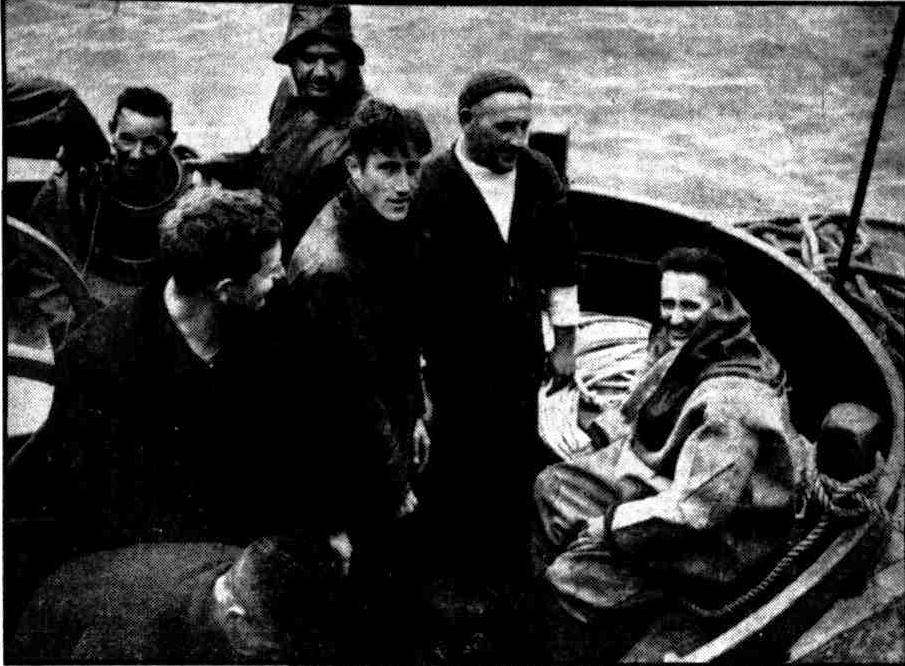
TORPEDOES IN BOW OF SUBMARINE
The bow of the Japanese submarine as it was raised from the Harbour yesterday, showing the two torpedo tubes. The torpedo on the left was projecting about three feet when the steel ropes were made fast for the lift, but it slipped back as the submarine was swung vertically by the crane. (Story on Page. 5.) TORPEDOES IN BOW OF SUBMARINE (1942, June 5). The Sydney Morning Herald (NSW : 1842 - 1954), p. 7. Retrieved from http://nla.gov.au/nla.news-article17798752
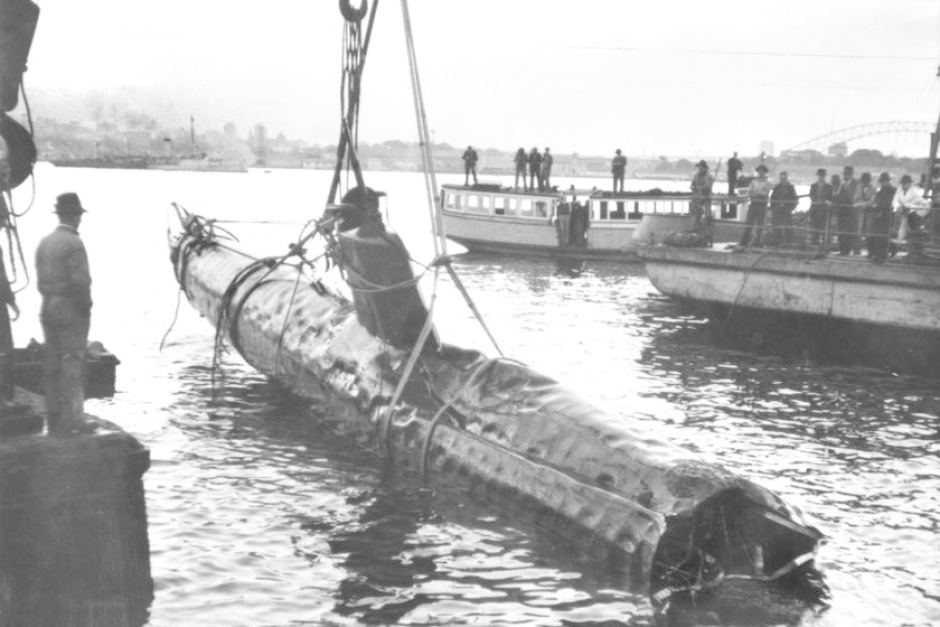
Whose The Responsibility?
HOW submarines entered Sydney Harbor calls for inquiry and for sackings. If it's the navy or the coastal defences that neglected safeguarding the great port of Sydney, the responsibility should be sheeted home.
H. G. Wells once suggested that there should be a Minister for Foresight in government.
Such a Minister appears to have been woefully lacking in preventing the audacious Jap adventure in Port Jackson. Early in the war at Scapa Flow the Nazis sank a battleship under the eyes of the British Navy. That, and what occurred at Pearl Harbor, should have been sufficient warning what to expect in Australia's greatest port. In last war the English Channel was netted against submarines. Troops were ferried to and fro between Britain and France without thought of loss.
Precautions at Sydney Heads were believed to have been taken. There should be no possible chance of a submarine entering Port Jackson. Quite apart from safeguards to shut them out where were the detector devices?
Of course, it may be that the idea was that submarines be admitted into the Harbor in order 'to trap them. But that seems hardly likely! It came as an unpleasant shock to Sydney on Sunday night that a happening such as alarmed the waterfront could be. Waterfront residents were' roused from their beds by terrific crashes around 11 pm on Sunday, and those .with a view of the harbor saw the water slashed by dozens of searchlights. A warship's guns went into action. A shell ricochetted and— glowing red— travelled up the harbor and outlined its flight to watchers.
Until the official statement was issued the city was alive with rumors. Relief came with the belated announcement that the attack had failed. Why were the facts so long withheld? Range of Jap "midget" subs, which are run on storage batteries, does not exceed 200 miles.
If the mother ship was at sea reconnaissance planes would have observed It. Could It, by any chance, have sheltered in one of the many inlets on the NSW coast. Japs are cunning enough to disguise such a vessel so that It would look like one of our coastwise craft — a collier, oven. Search for the mother ship should not overlook any bet. Sole cause for satisfaction Is that the Japs didn't pull oft the trick. But more safeguards and greater vigilance are plainly called for at the entrance to Sydney Harbor. Raid was carried out by three midget submarines, all of which were reported sunk — one by gunfire and the other two by depth charges. By Tuesday morning two had been definitely located and preparations made to raise them, and it was stated that approximate position of the third was known.
An old Sydney Ferries vessel, sold some time ago to the Navy by Sydney Ferries Ltd., and used as a depot ship, was sunk at her moorings. She was not directly hit, but the torpedo which sank her crashed into the wall alongside her and the explosion shattered her stern and smashed her Rocking. A second torpedo fired by submarine missed its mark and came ashore, where it was taken in hand by the Navy and rendered harmless. There were some casualties aboard the ship which was sunk.
Heavy guns from Ships and large-calibre machine-guns were in action. After- the shooting the harbor surface was lit by searchlights for' an hour, and patrol vessels skimmed over it at high speed, dashing about in quest of the subs. Lights wero then turned out, and just as most waterfront dwellers had settled into their beds, there were two tremendous muffled detonations which again rattled windows and caused the whole harborside to tremble. These were depth charges. At intervals through the night further depth charges were fired — the last of them soon after dawn. No announcement of the incident was made in Monday morning's Press, nor in early editions of the evening Press. First announcement came from Allied Headquarters in a brief communique at 2 pm announcing the raid and stating it ' was believed three enemy submarines had bqeii sunk, one by gunfire and two by depth charges. Sydney's reaction to the incident was -one of excitement, but there was no panic. Great majority of the watchers were ignorant of what was going On. Most thought it was an air-raid until they saw that searchlights were played on the water Instead of into the air. Then they knew something was happening in the harbor. Another theory 'propounded was that ammunition aboard a ship had exploded.
Suddenness of the incident was underlined by the fact that through it all Sydney Ferries and Manly Ferries continued to run. Watchers ' saw Manly boats, both outward and inward bound, carry on with their trips and pass across the scene of action as though nothing were happening. Similarly Sydney Ferries ran trips to Mosman, Cremorne, and Neutral Bay through the whole Incident. In fact, only one trip to a north-side suburb— timed to leave Circular Quay at 11.20. pm — was cancelled. Some of the passengers on these ferries saw the conning tower of a sub caught in searchlight beams and witnessed the first crash of shells and machine-gun bullets on the enemy craft.
Air and surface patrol search for the ship which may have brought the midget subs was carried on throughout Monday and Tuesday, but no success was reported. After Pearl Harbor, Emperor Hiro-hito of Japan granted posthumous promotion to the heroes of his suicide squads who manned these pigmy submarines and did not return. They were all named by Tokyo radio. Here's a chance for a few more posthumous promotions. They are brave men, without a doubt. Incidentally, the part our US allies played in this Port Jackson incident was splendid. We salute them !
In the light of the Jap midget submarine raid on Sydney Harbor, this Donaldson joke, published last week, appears prophetic.
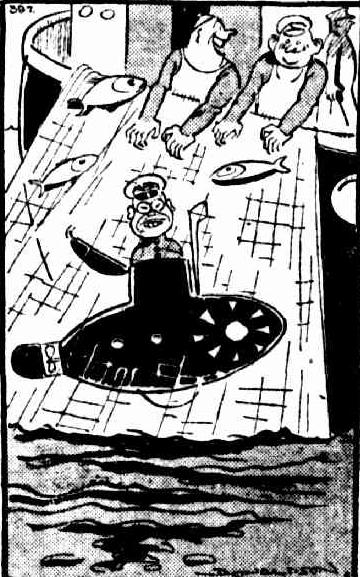
VICTIMS' STORY
Twelve survivors from an Australian coastal freighter which was torpedoed and sunk without warning by a Japanese submarine off the New South Wales coast, told grim stories of their ordeal when they reached an Australian port last night. They had been picked up by a naval vessel after having spent several hours on two rafts, clad only in pyjamas.
The ship was one of three vessels mentioned in an official communique issued yesterday by Allied Head-quarters as having been attacked by submarines off the coast. The communique said that one of the vessels was sunk and the other two escaped undamaged. (See Page 5.) JAPANESE SUBMARINE VICTIMS' STORY (1942, June 5). The Sydney Morning Herald (NSW : 1842 - 1954), p. 1. Retrieved from http://nla.gov.au/nla.news-article17798747
SANK JAPANESE SUBMARINE
The pilot and crew of the bomber which sank a Japanese submarine off the eastern coast of Australia, being photographed by a war correspondent's newsreel camera on their return to an Allied base. They are from, left: Sergeant D. K. Godfrey, of Perth (wireless air-gunner): Flight-Lieutenant G. Hitchcock (pilot), of Sydney; Flight-Sergeant A. T. Morton (wireless air-gunner), of Adelaide; and Flying-Officer S. Morrison (second pilot), of Melbourne. SANK JAPANESE SUBMARINE (1942, June 10). The Sydney Morning Herald (NSW : 1842 - 1954), p. 9. Retrieved from http://nla.gov.au/nla.news-article17796112
ROUTED JAPANESE SUBMARINE
Flying-Officer W. F. A. Winckel (left), pilot of the Netherlands Indies Air Force Squadron bomber, in the recent successful submarine hunt off the NSW coast. With him is Lieut. J. Ivan Loggem, the man who dropped the bombs on the Japanese submarine. ROUTED JAPANESE SUBMARINE (1942, June 13). The Sun (Sydney, NSW : 1910 - 1954), p. 3 (FOOT BALL LAST RACE). Retrieved from http://nla.gov.au/nla.news-article231794741
Only Fire Shells Explode: One Casualty
Only one casualty-a broken leg-and little damage, none of a military nature, resulted from the shelling from Japanese submarines of Sydney and Newcastle early on Monday .
SYDNEY was attacked at 12.5 a.m., the submarine firing shots for about 15 minutes.
About 15 shells were fired, but only three — thought to be 5.9 calibre — exploded, causing little damage. The others were duds. One of these hit a block of flats and Mr. Edward Hirsch, 40, a refugee, who left Germany five years ago, suffered a broken leg.
NEWCASTLE was shelled at 2 a.m., and the attack lasted 1 5 minutes. Only two of the 12 shells fired exploded, causing little damage apart from broken windows. Three or four crashed in streets near the beach. There were no casualties.
SHOTS were fired at motorists whose car headlights were conspicuous as they went through city streets while the alert was on, following the shelling of Sydney by enemy submarines. A pedestrian, Frank Rogers, 47, was wounded in the left leg and admitted to Sydney Hospital. A member of the Allied forces called on a passing motorist to pull up and to attract the driver's attention fired two shots into the air. It is believed that one of these bullets ricocheted from a building and struck the pedestrian in the leg. Hundreds of lighting breaches were reported in nearly all city and suburban areas. JAP SUBMARINES SHELL SYDNEY AND NEWCASTLE (1942, June 10). Weekly Times (Melbourne, Vic. : 1869 - 1954), p. 3. Retrieved from http://nla.gov.au/nla.news-article225564903
DAMAGED IN SYDNEY RAID
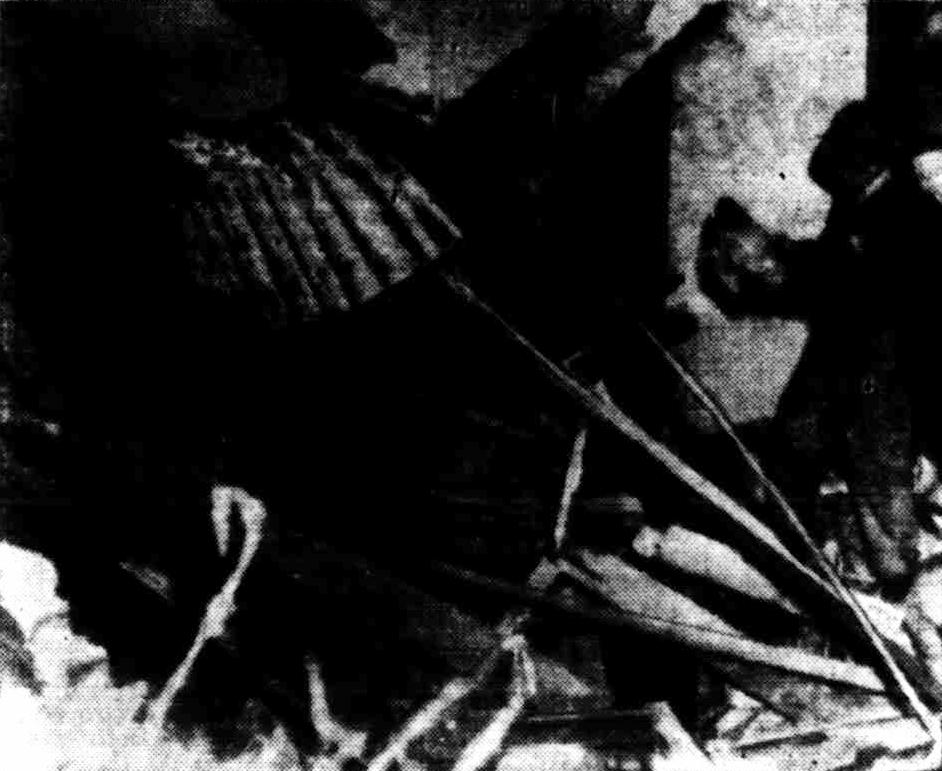
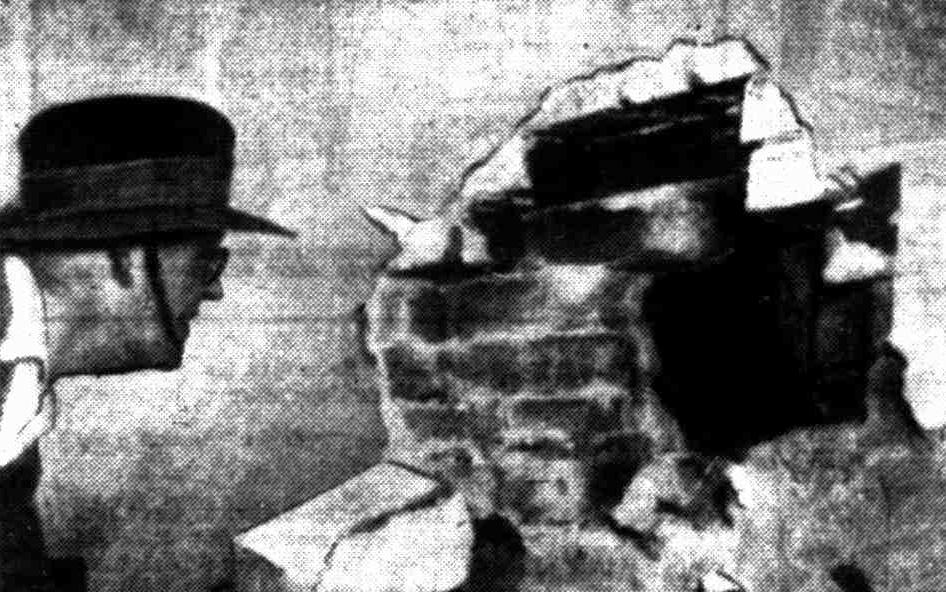
REFUGEE'S LEG BROKEN
The only casualty was Edward Hirsch, consulting engineer, who is in hospital with a broken leg. He was in bed at his flat in Manion Ave., Rose Bay, when a shell came through the roof. It knocked a hole in a brick partition wall, ripped up several feet of flooring, then ricochetted high up through another wall.
HERSCH, a German-Jew, was injured by flying bricks.
This ship arrived in an Australian port with a shell hole in the bow after fighting off an attack by a Japanese submarine off the south-east coast of Australia. The submarine is thought to be of the same type which is believed to have shelled Sydney on Sunday night. There were no serious casualties among the crew. SHIP SURVIVES ENEMY SUBMARINE ATTACK (1942, June 12). The Sydney Morning Herald (NSW : 1842 - 1954), p. 7. Retrieved from http://nla.gov.au/nla.news-article17799861
Submarine Crews
When the bodies of the four Japanese sailors recovered from the wreckage of the midget sub-marines raised from the bed of Sydney Harbour have been cremated with full naval honours to-day, their ashes will be retained in the columbarium at Eastern Suburbs Crematorium for return to Japan after the war.
Naval authorities were faced with a situation without precedent regarding what procedure to adopt with the bodies of the first Japanese naval personnel killed in action in these waters. However, cremation is the usual Japanese method of disposing of the dead, and it was considered that these men should have in death similar treatment to that which relatives and colleagues of Australians who died in enemy-occupied territory would expect to be accorded to brave men who died in the course of their duty.
A.N.A. PROTEST
Speaking on behalf of the Australian Natives' Association, of which he is general secretary, Mr. H. R. Redding, of Rose Bay, said last night that he was amazed to learn of the decision that the Japanese were to be cremated with full naval honours.
"I believe that such a proposal is abhorrent to Australians, who heard with regret of the tragic loss of life on the depot ship which was sunk at the hands of these persons," he said. "On behalf of the Australian Natives' Association, I wish to make an emphatic protest." CREMATION OF JAPANESE (1942, June 9). The Sydney Morning Herald (NSW : 1842 - 1954), p. 7. Retrieved from http://nla.gov.au/nla.news-article17829075
HONORS TO FALLEN JAPANESE
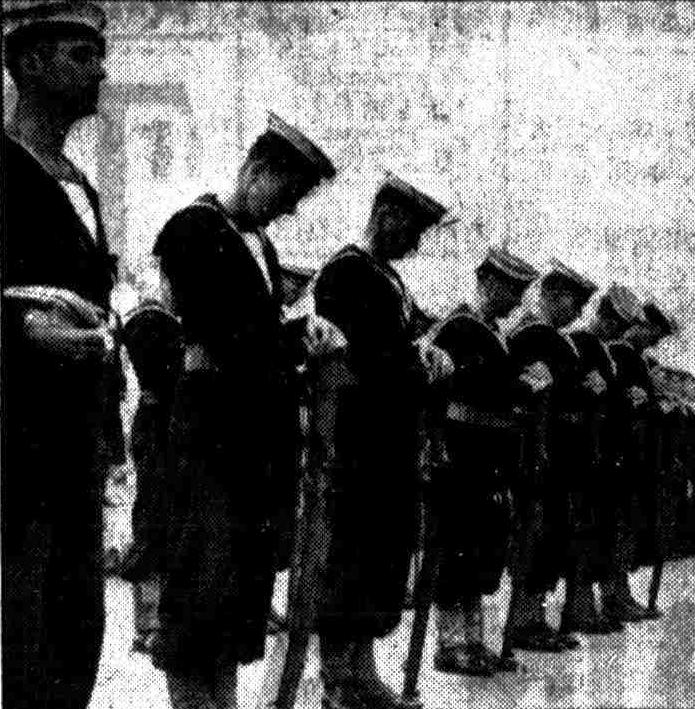
"RED UMBRELLA" IN JAPANESE SUBMARINE
CANBERRA - An article described as a ''red umbrella" found in one of the Japanese submarines in Sydney Harbor turned out to be an officer's two-handed sword. This was revealed by the Minister for the Navy (Mr. Makin) last night.
It is a type of sword used in Japan for executions. It was three feet long, with a slightly curved blade of 27 inches. "RED UMBRELLA" IN JAPANESE SUBMARINE (1942, July 8). Barrier Miner (Broken Hill, NSW : 1888 - 1954), p. 3. Retrieved from http://nla.gov.au/nla.news-article48407670
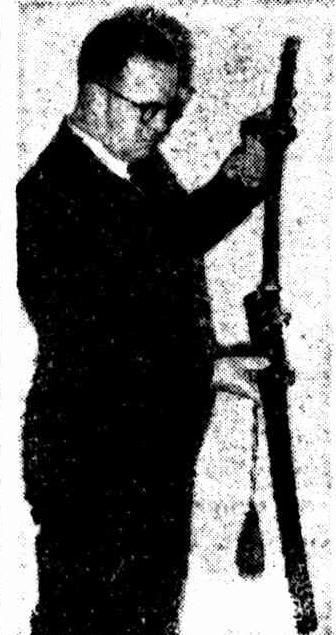
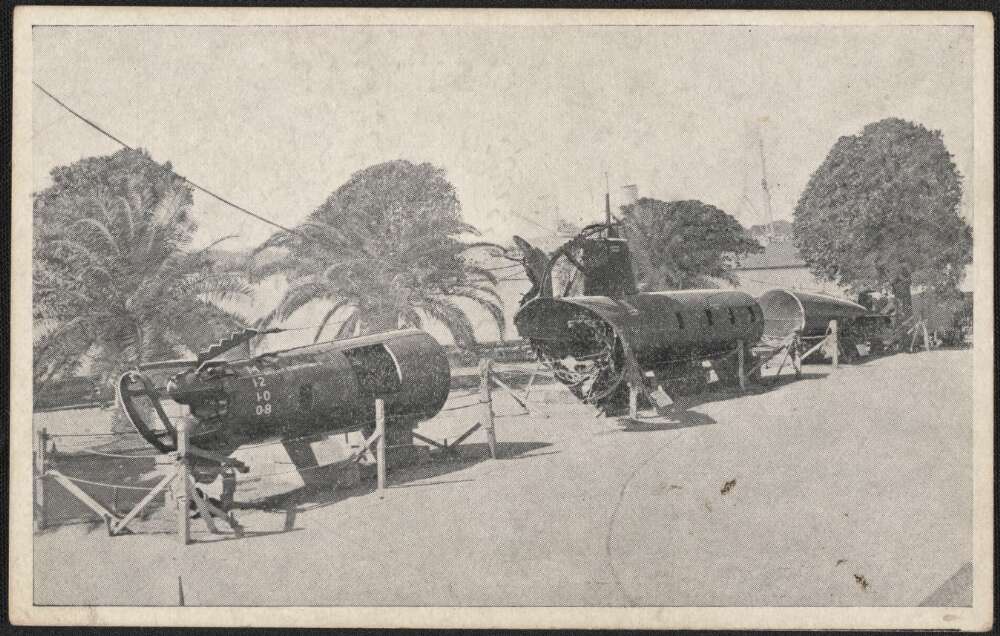
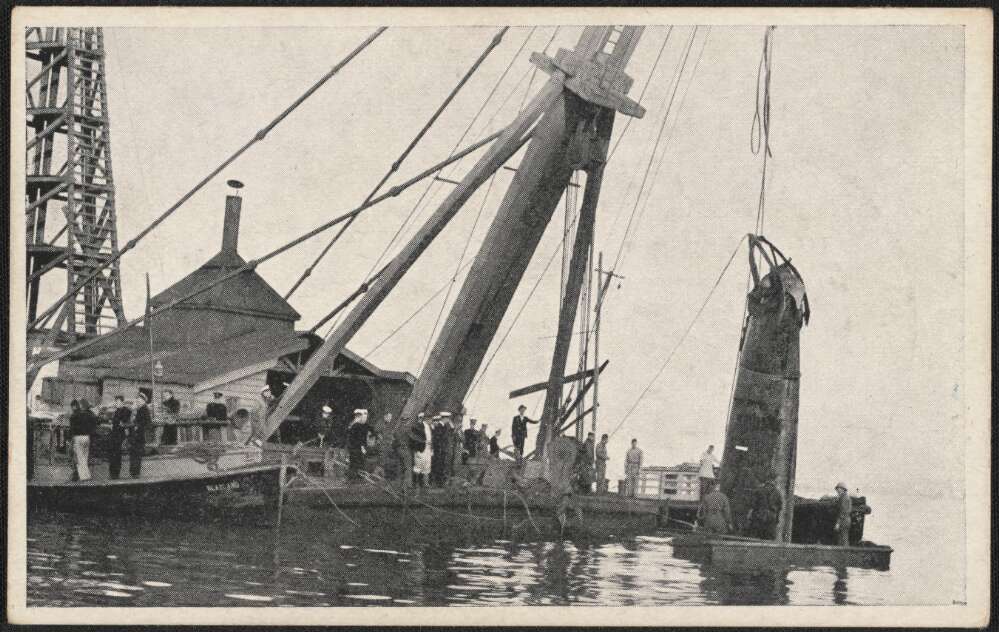
Two Killed Four Wounded
Attack off Coast
BULLETS SPRAYED DECK
"Don't fire! We are only a harmless fishing boat," yelled the skipper of a Sydney-owned trawler as a Japanese submarine began to shell the vessel off the east coast of Australia recently.
Vainly the fishermen sought cover by dodging to sheltered corners; two even dived overboard for safely. Shell after shell ripped into the superstructure and the submarine then circled three times, sweeping the deck with a hail of machine-gun fire.
When the attack was over two men lay sprawled on the deck, dead; four others were wounded, and the remaining six of the crew bewildered with shock. The trawler itself kept afloat and later was brought into a port.
SHOT DOWN IN DASH TO LIFEBOAT
The announcement of the shelling, made from General MacArthur's Headquarters yesterday, gave the first, indication since June 11 of the presence of a Japanese submarine in Australian waters. The submarine, a sea-going type 300 feet long, attacked the trawler, which was of 200 tons about 20 miles off the coast. The raider came to the surface about a mile from the trawler and opened fire with big guns.
A heavy sea was running and clouds constantly obscured the moon. The ship was trawling, and when the first shell came across the bows the crew thought a naval vessel had fired as a warning to put lights out.
STEAM PIPE HIT
The second shell hit the trawler and put the main steam pipe out of action. Then the superstructure, including the bridge, was quickly shot away.
As the first shells pounded in, the skipper of the trawler, Captain William Held, of Rozelle, Sydney, tried to warn the attackers by yelling that the vessel as only a harmless fishing boat, but, the only answer he got was the explosion of more shells.
It soon became apparent that the only chances of safety lay in getting clear of the ship. Twelve shells had already hit the vessel out of 17 to 20 fired, and there was a chance that in the intervals between more shells the lifeboat could be launched, but instead of shells a new terror now appeared.
The submarine, moving in from its distant range, opened fire with machine-guns. It circled the trawler three times at a distance of 100 yards, spraying the deck with bullets. The deadly hail struck the crew just as they made for the lifeboat. Archibald McPherson, a deck-hand, was running when a bullet struck, him down, dead. Arthur Scobie, the second mate was killed also.
SWAM ROUND SHIP
In this, new danger, attempts to launch the lifeboat were abandoned. All that the men could do was to dodge for shelter wherever they could. Suddenly the attack ceased. The sub-marine disappeared in a dive.
Frank Temple, a fireman, who was injured in the leg with a shell fragment, said that the first shell went over the bows. The next severed the steam pipe, and he leapt over the side for protection. But the submarine fired at them from all quarters, George Reid, chief engineer, told the same story. He said he swam round and round the ship and found it difficult to dodge the hail of machine-gun bullets and shells. William Miller, the cook, said he had been shelled by German sub-marines in the last war, but had never had such an experience as this, it was cowardly and typical of the Japanese.
None of the crew saw any Japanese in the glimpses they caught of the submarine.
CASUALTY LIST
The casualties on the trawler were:
KILLED
Archibald McPherson, deck hand, of the Frisco Hotel, Dowling Street, East Sydney.
Arthur Scobie, second mate, of Cardiff, Wales.
WOUNDED.
George Reid, chief engineer, of Mortdale.
Alexander Thomas Reid, brother of the captain, mate, of Mortdale, in a serious condition.
Frank Temple, fireman, Glebe.
I. W. Wilson, radio operator, of Amalgamated Wireless.
SUFFERING FROM SHOCK.
Captain William Reid, of 12 Byrnes Street, Rozelle.
Jack Reid, second engineer, of 40 Marlborough Street, Drummoyne.
William Bray, deck hand, resident of a Sydney hotel.
Theodore Anderson, fireman, on first trip, address unknown.
John Gunderson, fireman, 2 Ann Street, Surry Hills Sydney.
William Miller, cook, 358 Victoria Street, Darlinghurst.
FERRIED IN DINGHY
People from a fishing town on the coast gathered at the edge of the sea and watched the flash of the guns. As soon as the local police heard of the attack they asked several local residents to go out in their trawler. At the same time two policemen, accompanied by another local resident, put out in a 30ft launch. Because of the rough seas they were unable to get nearer than two miles from the attacked vessel.
In the meantime, however, the first rescuing craft had got close enough to the trawler to fix a line to it. Using the line, a dinghy plied to and fro until the two dead men and the survivors had been transferred to the rescuing vessel.
Later, the rescuing trawler hooked to the vessel which had been attacked, and held her until a tug arrived to take her away. When the wounded arrived at the fishing town, they were attended to by the local N.E.S. first-aid unit, and taken to hospital.
Close relatives of the dead and wounded were in the country town yesterday near the scene of the attack. They and members of the crew who could walk followed the funeral of the two men who had lost their lives.
"MURDER AND PIRACY"
"The Axis Powers have delighted in murder and piracy on the high seas," said the clergyman at the funeral service.
"Their practices, which have led to such a murder as this, warn us of the kind of thing which at any moment we here may have to face. The shells which laid our brothers low were not merely fired at them, but were aimed at trying to create panic among our people on the shore. But I am confident that that aim will not have any such result. Instead, I am sure that the people here will be stiffened in their determination to do all that is in their power to eradicate such evils from the earth."
The skipper, on behalf of the crew, has presented a letter to the N.E.S. organisation in the area, expressing gratitude for the splendid services rendered on the arrival of the crew.
The nationalities in the crew include Australian, Danish, English, American, Scottish, New Zealand, and Orkney Islands.
Previous attacks by submarines off the east coast of Australia have occurred as follows:
On June 2 it was announced that eight men were killed and ten injured when a midget submarine sank a naval depot vessel in Sydney Harbour.
On June 5 it was announced that one ship had been torpedoed and sunk, and two others attacked but had escaped damage, off the east coast.
On June 11 it was revealed that an Allied ship had fought off a submarine which shelled it off the south-east coast.
The crew of a Russian ship, on June 27, reported that a submarine had shelled and machine-gunned the ship off the east coast.
(Pictures on Next Page)
SURVIVORS OF SUBMARINE ATTACK ON TRAWLER
Above: The bridge of the trawler which was shelled by a Japanese submarine off the east coast of Australia. In the attack the bridge was shot away. Right: Four of the survivors, three of whom are related.
...TRAWLER SHELLED BY SUBMARINE (1942, August 5). The Sydney Morning Herald (NSW : 1842 - 1954), p. 7. Retrieved from http://nla.gov.au/nla.news-article17796063
SYDNEY, Wednesday: Relating a grim story as he sat at the bedside of his brother, Alexander Reid, one of the four seamen injured when a Japanese submarine attacked an unarmed trawler off the Australian east coast and killed two, Captain William Reid said that if they had only had a six-pounder he would have fought until he died. Captain Reid said that during the period he had been at sea he had seen some submarines, but the one that attacked them was the biggest of all. As he saw it approaching after surfacing within 200 yards he yelled out that they were only a fishing boat, then went to his room to remove his heavy clothes Through the portholes he kept watch on the enemy craft, which immediately commenced to shell.
The wireless operator, Wilson, who was interviewed in hospital today, said he first saw the sub-marine just aft. Just before a shell burst in the wireless room he had succeeded in sending out distress signals. When dodging around the deckhouse trying to avoid shells and bullets he was struck in the shoulder and stomach by pieces of shrapnel. Those who had seen the bodies of the victims stated that, embedded in their wounds were pieces of safety razor blades which the Japanese had included in their shrapnel. Japanese Submarine Was Large (1942, August 6). Tweed Daily (Murwillumbah, NSW : 1914 - 1949), p. 1. Retrieved from http://nla.gov.au/nla.news-article192943363
THE JAPANESE SAW THIS
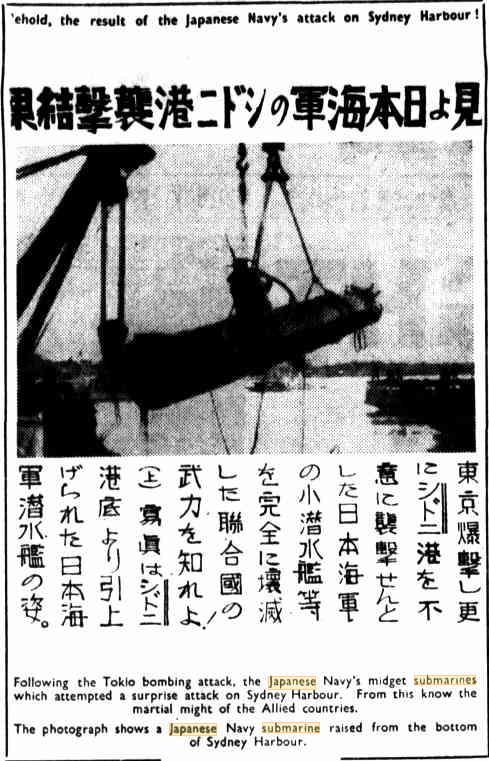
In this prompt manner the Directorate of Public Relations capitalised the triumph of the RAN patrol vessels which sent the attacking submarines to the bottom of the harbor.
Terse caption written in English and Japanese reads: "Behold the result of the Japanese Navy's attack on Sydney Harbor!" ... .
An explanatory note underneath the photograph says: "Following the Tokio bombing attack, the Japanese Navy's midget submarines attempted a surprise attack on Sydney Harbor. "From this know the martial might of the Allied countries. The photograph shows a Japanese Navy submarine raised from the bottom of Sydney Harbor."
Following the Tokio bombing attack, the Japanese Navy's midget submarines which attempted a surprise attack on Sydney Harbour. From this know the martial might of the Allied countries. The photograph shows a Japanese Navy submarine raised from the bottom of Sydney Harbour.
THE JAPANESE SAW THIS (1942, August 15). The Sun (Sydney, NSW : 1910 - 1954), p. 2 (FOOT BALL LAST RACE). Retrieved from http://nla.gov.au/nla.news-article231790144
Freighter Hit off Coast
Five of the crew were killed and nine injured when a Japanese submarine attacked and damaged an Australian freighter off the coast of New South Wales a couple of months ago. The announcement of the attack was authorised officially yesterday.
The bodies of the seamen who were killed were still buried under the wreckage on the vessel's deck when she berthed 24 hours after the attack with her stern shattered. Two badly injured men were on deck, lying on improvised bunks and sheltered by tough tarpaulin tents. They were too dangerously injured to be moved below.
The vessel was attacked soon after 5 a.m. in darkness and a heavy mist. Two torpedoes were fired. The first struck the stern, blasting away the rudder. Parts of the propeller were blown through the ship on to the aft deck near the-crew's quarters where 22 men were asleep. The second torpedo missed. The crew's quarters were wrecked by the explosion, and by heavy Iron spars, which were dislodged by the torpedo.
KILLED BY BLAST
Two of the five men killed are believed to have died from the effects of the blast from the explosion. One was enveloped in a sheet of steel, which had been wrapped round him by the force of the blast. An oxyacetylene torch had to be used to extricate his body.
Those killed were:
John B. Bromilow, A.B., of Douglas Street, Newport, Victoria.
Ernest Noble, A.B., of Soundwell Street, Largs, South Australia.
Arthur Sundeil, ‘Greenan,' Crown Street, Sydney.
Alfred Smith, of Miller's Point, Sydney: and
Henry G. Talbot. Quebec Street, Port; Adelaide, South Australia.
Those injured were:
Donald Mccauley. 30, Napier Street, Sydney; lacerated forehead and shock:
CAME TO SURFACE
Immediately after the explosion the crew saw the submarine surface and fire another torpedo, which passed under the stern of the ship.
The submarine then approached the freighter, and a Japanese officer shouted an order in English for the crew to abandon ship.
"We were amazed at the size of the submarine," said one seaman. "She was so close that we could easily have thrown a stone on her deck."
After the Japanese officer had ordered the crew to abandon ship the submarine fired a shell over the freighter.
"It went well over us and I think it was meant to hurry us up." a member of the crew said.
'The freighter was at the mercy of the attacker, and the master, after conferring- with his officers, ordered the men into the ship's boats.
The injured men who could be reached were helped into the boats.
When the boats had moved clear of the freighter, which the crew expected would be shelled, the submarine disappeared.
"We cannot understand why they did not finish off the ship," said Master Pemberton.
"The Japs came and had a good look, and evidently decided that we were doomed, and further shelling would be unnecessary."
RADIO REPAIRED
When the ship showed no sign of sinking, Captain McLellan called for volunteers to go aboard with him. The chief officer, the wireless operator, the boatswain, and the carpenter were selected. They repaired the wireless aerial, which had been wrecked, and seat out distress signals. During the attack about 40 distress signals were sent out before it was known that the aerial was useless.
Soon after two vessels arrived, and the rest of the ship's crew returned to the freighter. She drifted helplessly for hours with the pumps working; until tugs arrived and took her in tow. She was loaded heavily and was becoming dangerously low at the stern. The freighter, in tow of the tugs, reached a port next day.
While the freighter stood off-shore vessels took a doctor and ambulance men out to attend to the Injured Working by the light of torches they gave first aid to the injured. In the early mowing the stricken vessel was brought into port by tugs, three towing and one pushing astern.
FLAG AT HALF-MAST
Four ambulance waggons were waiting at the wharf to receive the injured as the ship berthed she and her flag lowered to half-mast to honour the dead
It was not until some hours later that the work of clearing the heavy wreckage from the bodies of the victims was completed.
Every member of the crew praised the cool seamanship of the master whose brother was master of another freighter which was sunk recently. He is still missing.
The crew described Frank Grant 16 the deck boy as a "blooming little hero Grant was one of those blown out of his bunk when the torpedo struck
"He behaved bravely all through and dragged one wounded men from the shattered bunk-house" one sea-man said. SUBMARINE ATTACK. (1942, September 5). The Sydney Morning Herald (NSW : 1842 - 1954), p. 9. Retrieved from http://nla.gov.au/nla.news-article17830397
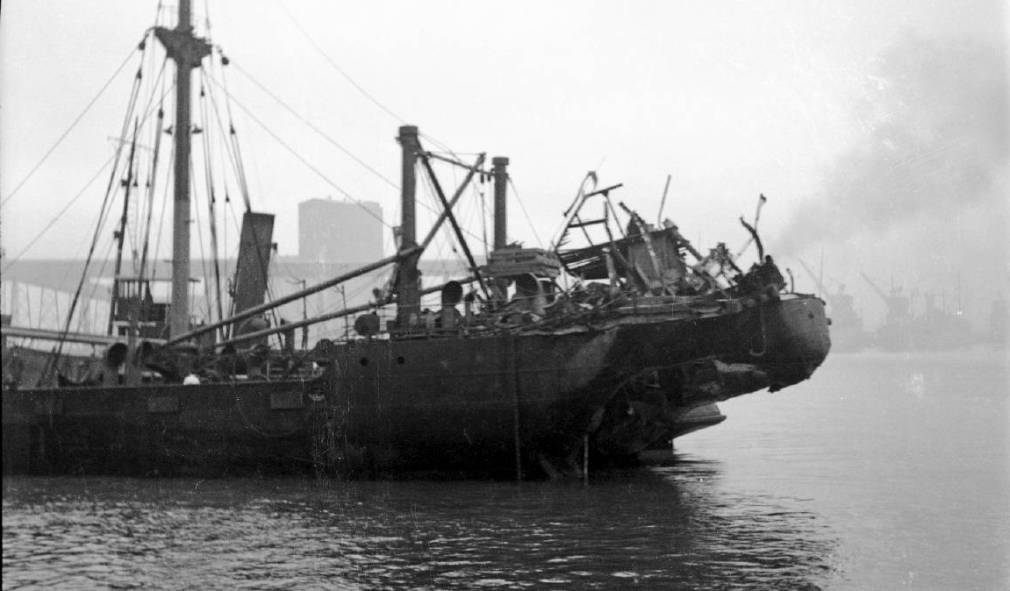
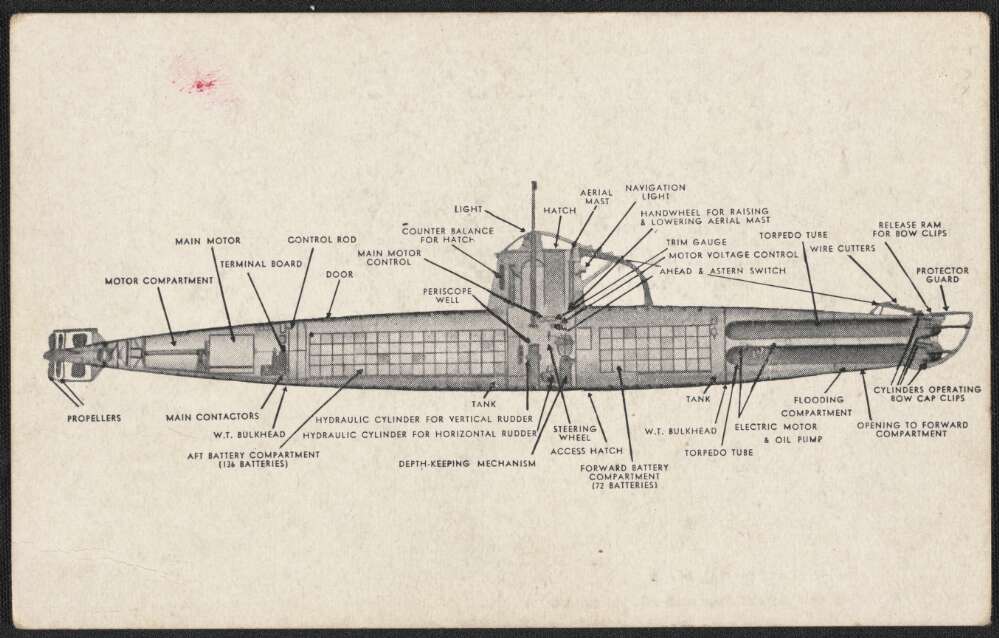
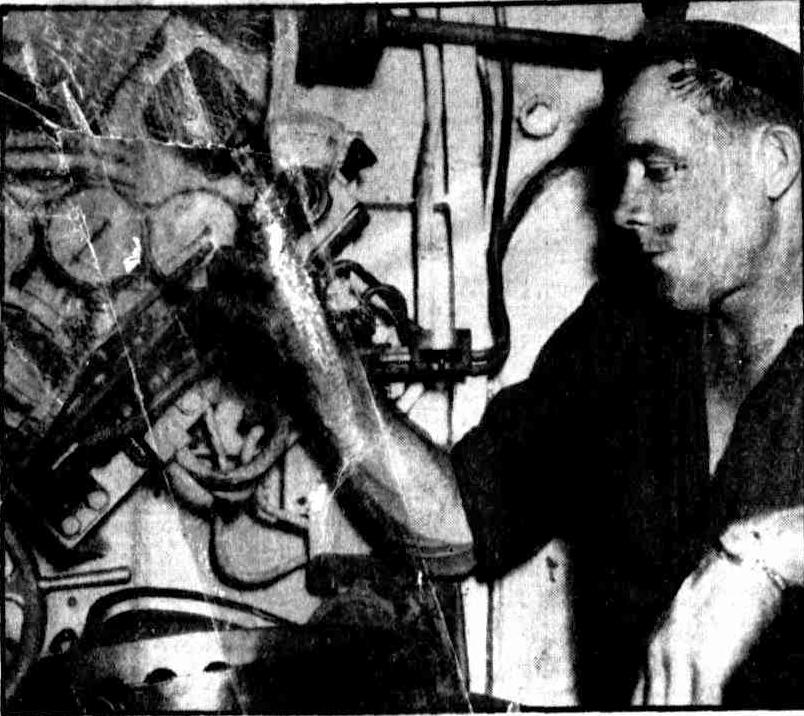
Hoisting Submarine Into Position
JAPANESE SUBMARINE TO-NIGHT (1942, November 17). Daily Advertiser (Wagga Wagga, NSW : 1911 - 1954), p. 2. Retrieved from http://nla.gov.au/nla.news-article144201750
JAPANESE MIDGET SUBMARINE.
The Minister of the Navy (Mr. Makin) has advised Cessnock Municipal Council that the Japanese mid-get submarine was being sent to Melbourne, and Council's request that it be exhibited at Cessnock would be considered when the future itinerary of the submarine was being arranged. JAPANESE MIDGET SUBMARINE. (1942, November 13). The Cessnock Eagle and South Maitland Recorder (NSW : 1913 - 1954), p. 5. Retrieved from http://nla.gov.au/nla.news-article99934595
One From Before - One From During - One From After
Pittwater RegattaCraft of every description will be seen at Broken Bay on Tuesday when the 33rd annual Pittwater Regatta will be held.
The bay provides a picturesque setting for what is regarded by sailing men as the leading aquatic event of the year. The net proceeds will be given to the Lord Mayor's Patriotic Fund. Nearly 200 entries have been received for 10 sailing events, six motor boat races, and an aerial derby. The first race will start at 10.10 a.m. and the last at 4.30 p.m.
Aeroplanes of the Royal Aero Club of New South Wales, will compete in an aerial derby for the Chas. E. Blanks Trophy. The planes will start from the Kings-ford Smith Airport, Mascot, and race round a mark at Goddard's wharf. Palm Beach, thence to finish at flagship Gloria, a distance of 28 miles. After the derby, the planes will give an exhibition of formation flying and aerobatics, followed by an air attack on a "submarine," on which "bombs" will be dropped. Handicap Races Among the attractions will be two handicap races for yachts. The first, the John Roche Memorial Handicap, will start at 10.45. The second race will be for the Pittwater Cup, presented by Mr. A. D. Walker, president of the regatta committee. Sixteen yachts will be despatched to a flying start at 2.25. Officials for the sailing races are:—
Starters, Fred Langley. R. J. Gray, R. E. Ross; judges. J. F. Black, F. R. Cooper, R. B. Morgan, I. Irvine; timekeeper, N. R. Goddard. Flag officers for the day are:— Commodore, Arthur D. Walker; vice-commodore, F. C. Mackillop; rear-commodore. E. Cliff Gale.
Pittwater Regatta (1939, December 24).The Sun (Sydney, NSW : 1910 - 1954), p. 12 (SPORTING SECTION). Retrieved from http://nla.gov.au/nla.news-article231495416
SUBMARINES ATTACK IN SYDNEY HARBOR
Story Of The Night-Watchman
"SMITH'S" asked last week for an inquiry into circumstances surrounding the submarine attack on Sydney Harbor on May 31, but Navy Minister Makin has declined the request. Since then, another report has come to "Smith's" — seemingly well-based — and information either confirming or denying it has not been procurable from, official sources.
Report now received states that on the night of Sunday, May 31, when the submarine attack was made on Sydney Harbor, a night-watchman on duly on a punt rowed to a certain spot. About 10 o'clock he noticed unusual movement in the water not to be accounted for by tidal or other natural influences. He thought he detected a dark object submerged at a point where the disturbance was most evident. He at once rowed to an auxiliary naval vessel on duty not far distant. There he reported what he had seen, and was told he was talking nonsense, and had better go home and get to bed, or words to that effect. Not satisfied, he rowed back to the punt. Again observing under-water movement, he visited the spot where he had seen the dark object. It was still there. For a second time he hurriedly rowed to the naval vessel and on again being ridiculed asked that a naval rating accompany him to investigate. This request was granted. With the naval rating he rowed a third time to the point of disturbance. Naval rating peered into the water, exclaimed excitedly, and told the watchman to row him as fast as possible back to the ship. He was sure the object was a submarine. , If this report be true, that night-watchman deserves recognition for his alertness and insistence. In an attempt to confirm or rebut . the story, "Smith's" made various Inquiries and learned that the- watchman was apparently controlled by the Maritime Services Board. ' An officer of that Board stated that while part of the work on those defences had been under their control, another part was under naval control, and it would be necessary to Inquire from that source. An inquiry was made to Naval Establishments Offices and an officer, whose name we have, on being advised of the report regarding the night watchman, replied: "We won't make any statement on anything you publish." It was pointed out to him that the report was a very serious one and he was asked: "Does that mean you will not give an opportunity for us to deny or disprove it?"
After a moment of hesitation he replied: "I will see the admiral's secretary and see what he thinks about it." Away At Lunch After a few seconds he reported that the secretary was away at lunch and would not be available till after two. Later that afternoon the same officer advised: "The "The admiral will not make any statement on that. If you wish to make any Inquiry on that you must address it to the secretary of the Naval Board." "Smith's Weekly" is addressing an Inquiry accordingly, but if the report were groundless why should It not be denied without .delay, without needless formalities, and, above all, without taking up the time of such a body as . the Naval Board? One reasonable; deduction Is that the report must have some foundation. This makes it all the more necessary for an Inquiry, and a public finding, as advocated in last week's "Smith's" with regard to other aspects of the attack on Sydney Harbor. Navy Minister Makin has announced that no such inquiry is necessary. If only to allay public anxiety and restore public confidence it is urgently necessary. Even the official statement by the Minister himself Increases that need, since In itself that statement Is anything but reassuring.
According to a Press announcement of Wednesday, June 10, day on which "Smith's" previous article concerning harbor defences appeared, he stated: "A thorough Investigation has been made into the entry of Japanese midget submarines, and this has proved the defences are up to the mark. It must not be forgotten that the defences are not yet complete."
Three strong reasons now exist for demanding a full enquiry: 1: Circumstances as related in last week's issue of "Smith's." 2: Failure of the authorities to give instant denial to report of the night-watchman's case. 3: Admissions of fault actually made, and others implied, in the Minister's own statement.
Public anxiety must be allayed. National safety must be protected. A full enquiry, as in the Pearl Harbor case, is essential. SUBMARINES ATTACK IN SYDNEY HARBOR (1942, June 20). Smith's Weekly (Sydney, NSW : 1919 - 1950), p. 3. Retrieved from http://nla.gov.au/nla.news-article234590143
By H. GORDON COLEMAN
A close-up of the largest span being floated into position.
THE old Hawkesbury River bridge, built by an American firm, lasted less than 60 years. The locally designed all-Australian new bridge will have a life of at least 200 years.
A chance discovery necessitated a new bridge—a discovery which probably averted what would have been the worst railway disaster on record.
A railway engineer, reading an American text book, found a statement that the interior of the piers of the Hawkesbury bridge comprised rubble.
The Chief Railway Constructional Engineer (Major-General Fewtrell) pointed out that this did not check with original specifications, which pro-vided for metal casing on the out-side and concrete on the inside, so that when the metal rusted the concrete would remain.
But the bridge had already de-eloped an ugly pier crack, and in view of the text book statement no time was lost in scouring Australia for men who had worked on the concrete mixing board. One was found, and the information he supplied worried the engineers. They promptly set a diamond drill to work on the cracked pier. The drill made slow progress through the stone, but once below the water level it dropped into a soft substance.
SCIENTIFIC tests showed that the steel casing would have crumbled completely away in 1939, and the interior would have quickly washed out. Below water level the pier was several feet out of alignment on one side. Once daily, two express trains passed each other on the bridge, often at this pier.
To counter the defect, single-track working was introduced, and speed reduced to walking pace. The new bridge was commenced as soon as possible, and will be completed this year—the anniversary of the opening of the old bridge, 57 years ago.
Eight large tubes in the centre of each of the piers of the new bridge contain fresh water as a safeguard against deterioration.
When the piers of the old bridge became unsafe it was impossible to trace the defect until a diamond drill was used.
With the new bridge it is planned to submit water from the interior of the tubes to periodical tests. Presence of salt water would indicate the development of a fault.
It is the first time in Australasia that this method has been used to detect deterioration of bridge piers.
In the construction of the piers a caisson 51ft by 29ft was built against a timber dock on the southern bank. In the centre were eight large steel tubes, which formed the centre of the caisson. Concrete was poured between the tubes, and steel used for reinforcement.
The tubes were ultimately filled with air, and the caisson, weighing 1,500 tons, and up to 35ft long, was floated from the dock to its position in the stream, where it was anchored. Air pressure in the tubes was released, and the concrete sank to a point where it was possible to pour more.
At the bottom of the caisson a 25ft high cutting edge dug into the silt on the river bed when bottom was reached. Tube caps were removed alternatively, so that a large grab, operated off a jib crane attached to a punt moored alongside the pier, could be dropped down the tubes and cut into the river bed, automatically closing as it was lifted, and dredging a hole for the caisson to settle. This was continued until the foundation was reached.
In construction of No. 7 pier, 15,500 tons of cement was used. It sank to 183ft below high water mark With the, exception of. No. 8 pier, which was constructed by the lock system, and settled on a rock foundation at 110ft, all piers were sunk to approximately 180ft.
SAND bottom was found for the piers, compared with soft mud for the old bridge.
Each tube was filled with sand for half its length; a cement plug was constructed on top of the sand, and from there to sea water level the tube was filled with fresh water.
Two men lost their lives in the construction of the piers.
Each of the steel spans-six of the eight are already resting on the piers was constructed on the southern bank, where a ledge was cut out of a sandstone cliff face, and three docks were cut into the ledge at right angles to the stream. It was into these docks that pontoons which carried the spans out to the piers were floated at high tide, and allowed to drop with the tide on to the piers-45ft above high water level.
There was tension as each span was moved from the land. Work-men operated cautiously, engineers paced up and down the cliff face, and along the old bridge, others stood anxiously on the piers as the span approached down a treacherous tidal stream. From a specially constructed '"bridge" the chief designer, Major-General Fewtrell (former G.O.C. Australian lines of communication) gave orders over the telephone, or moved up and down the timber cat walk, constructed along the, length of the span, to check all movements.
Two of the spans, 450ft long, 34ft wide, 72ft high, weighed 1,470 tons when' lifted on to the pontoons. In the construction of each 180,000 steel rivets were used. There are four spans each 375ft long, two,150ft long, and on the southern side two 75ft concrete approach spans are being built.
Two large approach tunnels made it possible to shorten the distance across water by 146ft. On the Sydney side engineers cut away sandstone to a height of 100 feet before they commenced to tunnel.
As each span was constructed on the ledge it had to be raised to pier level before the pontoons could be floated underneath to carry it away. To undertake this job two huge lifting jacks, each weighing 230 tons, and 52 feet high, were designed by young engineers-two were still studying for their diplomas--and these jacks lifted the spans 25ft in two and a half days.
It took more than two years to prepare the site and construct difficult machinery in peculiar locations. Many engineering problems had to be surmounted before, construction commenced.
As each span neared completion key men engaged in their movement were specially trained. A large board, representing the land and water at the site of the new bridge was laid down in the southern tunnel. Model piers were accurately fixed in position in the "stream," and miniature spans, pontoons, and equipment were used so that the men could practice in detail movements and prepare for emergencies likely to develop when the full-size span was transferred to the piers.
During war years the old bridge was guarded by submarine nets. When the Japanese submarines were sunk in Sydney Harbour the captain of one had a map of the Hawkesbury River in his possession. Had the bridge been destroyed there would have been no direct north-south rail link. The alternate route would have entailed travelling an additional 400 miles— via: Lithgow—Dubbo—Werris Creek. This would have seriously affected troop movements and the transport of war supplies.
THE old bridge is to be removed. Each span will be floated off the piers on the rising and falling tide and then dismantled. After general checking the steel in the seven spans will be transported to other parts of the State and re-assembled to form bridges across various waterways.
Two spans have been reserved for the crossing of the Darling River at Bourke and Billabong Creek on the proposed Bourke to Barringun rail-way, which is part of the Common-wealth's project for a north-south inland railway through the back of Queensland, linking up with a cross-country line to Darwin. Hawkesbury Bridge to Last 200 Years (1946, May 11). The Sydney Morning Herald (NSW : 1842 - 1954), p. 6. Retrieved from http://nla.gov.au/nla.news-article17980460
